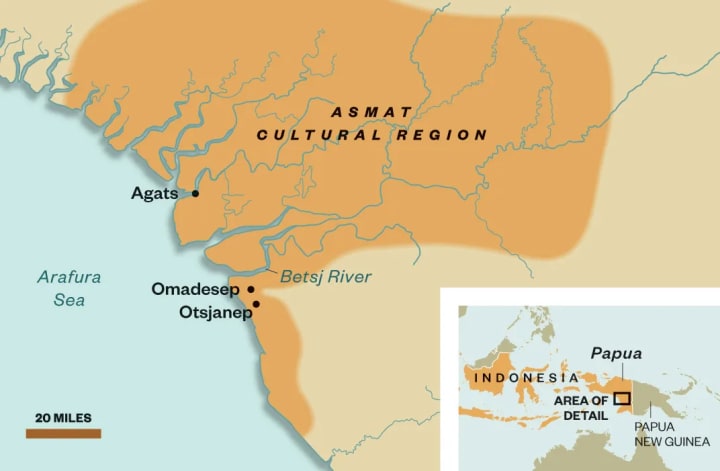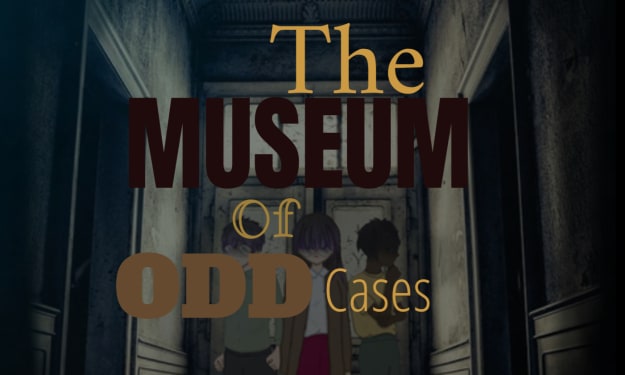
In the year 1969, an intrepid adventure magazine reporter named Milt Macklin embarked on a perilous journey to New Guinea with his film crew. Their mission was to create a documentary about a missing person who had vanished in the dense jungles of this mysterious land. Milt's fervent hope was not just to document this disappearance but to uncover the truth and capture it on film, catapulting his documentary to unprecedented heights of success. Despite their tireless efforts, extensive footage, and a relentless search, the missing person remained elusive, and so Milt reluctantly returned home, shelving the footage, never to be watched again.
Fast forward four decades, and this forgotten footage was unearthed from storage when another documentary crew decided to embark on a quest to uncover the truth behind the missing person's story. As they meticulously reviewed the footage, they stumbled upon something utterly astonishing. What they discovered would not only reveal the harrowing tale of the missing person but also plunge them into a disturbing and horrifying mystery that had long been concealed.
Now, let's delve deeper into the story, venturing back to that fateful morning of Saturday, November 18, 1961. On this day, a young and adventurous 23-year-old man named Michael Rockefeller found himself in a dire predicament. He was aboard a small boat off the coast of New Guinea, desperately trying to restart its stubborn outboard motor. As Michael pulled on the cord, frustration welled up within him as the engine sputtered and refused to come to life. Stranded in the open sea, Michael and his small crew were at the mercy of the relentless currents, drifting further from the safety of the coastline.

However, their perilous situation was about to escalate. The boat, a makeshift 40-foot catamaran consisting of two handcrafted canoes lashed together, began to succumb to the unforgiving waves. The rough waters where the brown river met the blue sea caused the boat to fill with water. The engine shut down, and with each wave that crashed upon them, the catamaran sank lower. Michael and his crew had embarked on this risky journey for a specific purpose—to visit the Asmat tribe, known for their unique artistry. Michael was particularly captivated by their intricate wooden poles, sculpted to resemble a stack of men standing upon each other's shoulders.
These poles, known as bis poles, held a profound significance for the Asmat tribe. They believed these artifacts contained the souls of their fallen warriors, awaiting vengeance until their enemies were vanquished. Michael had previously made contact with the Asmat tribe, aiming to barter for one of these prized bis poles. However, despite fulfilling his end of the bargain, the pole had never arrived. Fueled by determination, Michael returned to New Guinea with the hope of finally obtaining this elusive treasure.

Yet, as Michael watched the receding shores of New Guinea while adrift in the sinking catamaran, his thoughts were far from the bis pole. He faced a dire situation with his crew consisting of a French anthropologist named Renee and two teenage Asmat guides named Simon and Leo. Desperation filled the air as they struggled to restart the engine, each futile attempt pushing them further into the treacherous Arafura Sea.
Simon and Leo, recognizing the gravity of their predicament, proposed a daring plan—abandon the sinking catamaran and swim to the distant shore, nearly half a mile away. They knew that waiting longer could render the swim impossible due to their rapid drift. Renee, not a strong swimmer, was hesitant, but Michael, resolute in his determination, was not yet willing to relinquish his cargo of valuable goods, intended for barter with the Asmat tribe.

As the minutes ticked away, Simon and Leo took the plunge, swimming towards the distant shore in the hope of securing help. Michael and Renee remained on the doomed catamaran, futilely bailing water. Then, a rogue wave struck, capsizing the vessel, plunging them into the water. They clung to the overturned catamaran for dear life.
Miraculously, Simon and Leo reached the shore, their future uncertain. Michael, however, had no time to ponder their fate. It had been months since he had last bathed, and the scent of sweat and dirt clung to him. His hands, calloused from rowing, were battered and raw. Michael, a scion of the legendary Rockefeller family, was a world apart from his opulent heritage.

While his family enjoyed the heights of power and wealth in America, Michael had chosen to immerse himself in the remote wilds of New Guinea. He had initially arrived with a team of Harvard filmmakers, capturing the lives of a reclusive tribe. During that expedition, a battle had erupted, and Michael had been accidentally wounded by an arrow. Remarkably, he had never disclosed this to his family, fearing that the Rockefellers would seek retribution against the tribe that had inadvertently harmed him.

In stark contrast to his family's legacy, Michael had developed a profound connection with the indigenous people of New Guinea, viewing them as his own. His fervor for their culture and art had driven him to return, hoping to bridge the gap between the Western world and the Asmat tribe through the exchange of their priceless artwork.
As the hours passed and dawn broke on November 19, 1961, Michael and Renee still clung to the upturned catamaran, desperately awaiting rescue. Hope was dwindling as they saw no sign of help on the horizon. Michael, who had once envisioned a triumphant return with valuable artifacts, was now facing a grim reality.

Desperation gave rise to a daring plan. Michael was a strong swimmer, and he was convinced that he could make the arduous swim to the distant shore, even if it meant covering a distance of ten miles. He assured Renee that he would embark on this challenging journey, leaving her behind to wait for rescue. Renee, fearful and hesitant, implored him not to go, but Michael was determined. He fashioned makeshift flotation devices using gas canisters and prepared to depart, promising Renee that he would return with help.
As Michael plunged into the sea, the daunting task ahead weighed heavily on his mind. He swam with unwavering resolve, driven by the urgency of their dire situation. For hours, he fought against the unforgiving currents, battling exhaustion and the vast expanse of the open sea.

Meanwhile, back on the upturned catamaran, Renee anxiously awaited their fate. The hours dragged on, and there was still no sign of rescue. It had been a long and harrowing night, and hope was fading fast.
Suddenly, as if a beacon of hope had materialized in the sky, a bright flare erupted overhead. A passing plane had spotted Renee and the upturned catamaran, firing the flare as a signal of their presence and intention to assist. Within hours, a rescue boat arrived, and Renee was plucked from the treacherous waters. As he stepped onto the rescue boat, he inquired if Michael had informed them of their dire situation. To his shock, he learned that Michael had never relayed their circumstances.

The captain of the rescue boat explained that it was Simon and Leo, the Asmat guides, who had alerted them to the dire situation at sea. No communication had been received from Michael since his departure on the daring swim. Renee's heart sank as he contemplated the fate of his courageous companion.
Back on the shore, Simon and Leo had relayed their story to the local authorities and initiated a rescue mission. But as hours turned into days, and days into weeks, hope for Michael's survival dwindled. Despite extensive search efforts that extended for several months, there was no trace of the young Rockefeller scion.

Michael Rockefeller's disappearance became a global sensation, captivating the public's imagination and prompting countless theories about his fate. Some speculated that he had been devoured by sharks, while others believed he had succumbed to exhaustion and drowned. The mystery of what had befallen him in those treacherous waters of the Arafura Sea remained unsolved.
Years later, in 1979, a Dutch journalist named Carl Hoffman embarked on a quest to uncover the truth behind Michael Rockefeller's disappearance. He delved deep into the history and culture of the Asmat tribe, seeking clues that might shed light on the young adventurer's fate. What he uncovered was a shocking and disturbing revelation.

Hoffman's investigation led him to startling allegations that Michael Rockefeller had been captured by the Asmat people after his daring swim to shore. According to the accounts of the Asmat tribe members he interviewed, Michael had been taken captive, but his fate remained a subject of debate within the tribe. Some claimed that he had been killed and eaten as part of a ritualistic ceremony, while others suggested that he had been adopted into the tribe.

The Asmat people practiced a form of cannibalism known as endocannibalism, where they believed that by consuming the flesh of their enemies, they could absorb their strength and essence. While this practice had largely ceased by the time of Michael's visit, it was not unheard of for such rituals to continue in secret.

Hoffman's findings ignited a firestorm of controversy and debate. Some questioned the credibility of the accounts he had gathered from the Asmat tribe members, while others found the idea of a scion of the Rockefeller family being subjected to such a fate both shocking and compelling.

To this day, the fate of Michael Rockefeller remains one of the greatest unsolved mysteries of the 20th century. Despite extensive investigations and various theories, his disappearance and the circumstances surrounding it continue to baffle and intrigue those who delve into this enigmatic tale. The story of Michael Rockefeller serves as a haunting reminder of the mysteries that still lie hidden within the uncharted corners of our world.






Comments (1)
wow is he from THE Rockefellers?